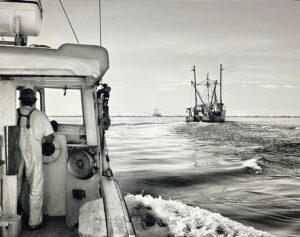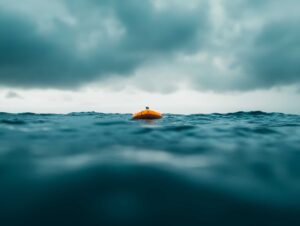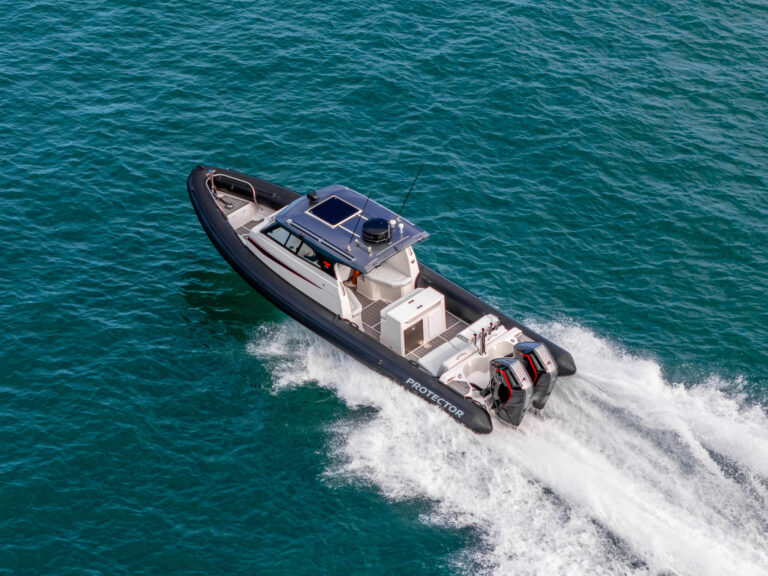Four-stroke outboards are more fuel-efficient, quieter and cleaner than ever. Manufacturers are also reducing the weight of these engines with their second-generation models.

Suzuki and Yamaha have added 4-cylinder 4-strokes to their offerings to complement their V-6 counterparts. The new Suzuki DF200A weighs 498 pounds, about 12 percent less than the company’s V-6 200 models. Yamaha’s new 487-pound F200 weighs 119 pounds less than its V-6 F200 and only 14 pounds more than its 2-stroke Z200 HPDI outboard.
“I think the weight issue is overblown sometimes,” says Soundings technical adviser Erik Klockars. “[Four-strokes] are heavier but not by much anymore, and the acceleration and speed are nearly the same [as 2-strokes] with advances such as variable valve timing.”
Still, the 4-stroke might not be the right repower choice for all boats, especially those that are about 12 years old or more. Older boats designed for 2-stroke power may lack the buoyancy in the stern to support a 4-stroke. And an older 225-hp 4-stroke can weigh nearly 600 pounds. Model year matters.
If you really want that 4-stroke, modifications can be made to support the engine. A friend of mine bought a 1974 20-foot SeaCraft and wanted to repower with a 140-hp 4-stroke. The boat had been powered with a much lighter 130-hp 2-stroke. The old deep-vee’s rotting transom had to be rebuilt and the fuel tank and fuel lines replaced. To accept a heavier engine, my friend had to lighten the load aft as much as possible or deal with potential performance and safety issues.
Too much weight in the stern could hurt the boat’s ability to climb onto plane and there was a possibility that water could enter the cockpit through the in-deck scuppers. So the batteries and live well were moved forward. The batteries went inside the console and a live well was built into the console’s forward side. The new transom was 25 inches tall — 5 inches higher than the original. Not counting the cost of the engine, my friend sank several thousand dollars into this repower.
If a 4-stroke just won’t work with your boat, keep in mind that the new-generation 2-strokes are nothing like their smoky counterparts from years ago. Bill Boynton’s 1983 Grady-White Tournament 19 was originally powered with a 100-hp Johnson, and then a 150-hp Yamaha 2-stroke. He considered a 4-stroke, but a lighter 2-stroke was the better choice for him.
Boynton went with a 150-hp Mercury OptiMax with direct fuel injection. This is a good engine, in my opinion. I ran one for about 500 hours on a 21-foot walkaround. Though it was louder than a 4-stroke, the Opti was quite fuel-efficient, getting about 4 mpg at 20 mph. Evinrude makes a good 2-stroke, too. One of the selling points of its direct-fuel-injected E-TEC engines is that for the first 300 hours they require no maintenance. And they can be winterized without removing the cowling. (See Page 18 for a story about the E-TEC G2 line.)
There are other considerations in the transition from 2- to 4-stroke engines. Of course, 4-strokes don’t require you to add oil to the gasoline, but the engine oil needs to be changed every 100 hours or so and other maintenance tasks, such as valve adjustments, may be required. Also, the fuel system on a boat with a 2-stroke has to be flushed to avoid running gas with oil into the new 4-stroke, notes Klockars. “That’s a cost that often gets overlooked,” he says.
Klockars has been impressed with manufacturers’ efforts to lighten their 4-strokes. He says he would not be surprised to someday see a 4-stroke that weighs the same as or less than a 2-stroke.
Klockars has carried out or provided consultation for dozens of 2-stroke-to-4-stroke conversions. “The most common thing I hear after the repower is, ‘Why did I wait so long?’ ”
August 2014 issue










